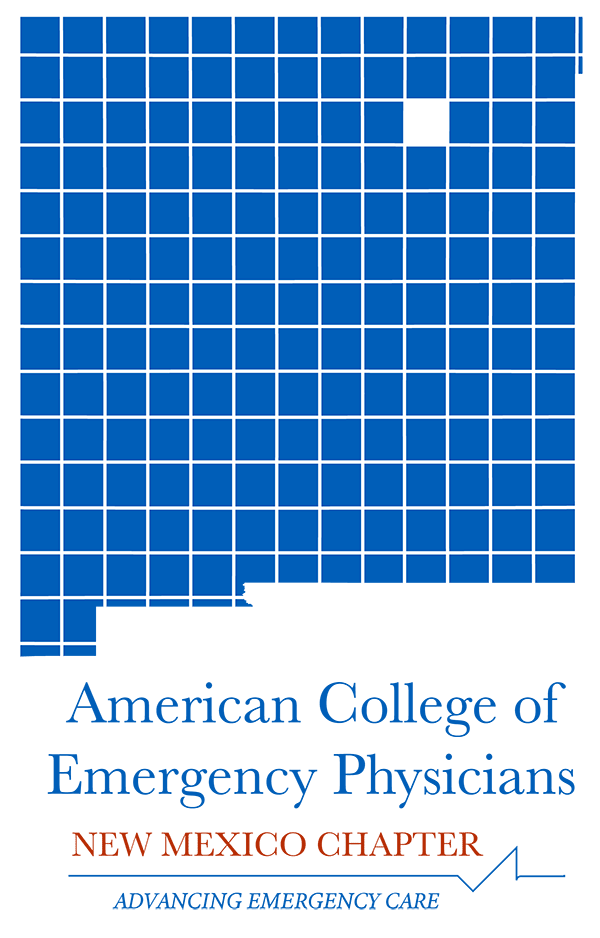Jessica Evans-Wall, HO3, UNM
On a busy shift there is a sad sense of relief when you pick up a chart that says chief complaint ‘SI’ because the disposition is effectively done. We know the patient will have to be evaluated by psychiatry and/or transferred to psychiatric services. Many studies over the years have shown that healthcare providers are poor at predicting future suicide attempts, but that senior physicians and specifically senior psychiatrists are modestly better (Wang, 2016). It seems that every shift since the start of residency I have seen an intentional overdose, someone who feels suicidal and unsafe with plans to jump into traffic, or tragically completed suicides with self-inflicted gunshot wounds. I have lost very dear people in my life to suicide, and every case I see in the ED feels personal. It felt all too common, and I was not sure if this was because now as a resident, I saw the full range of patients that I had previously been sheltered from as a medical student, or if suicide really was more common in New Mexico. We all feel that this past year and a half has been trying and challenging for mental health, both for ourselves and our patients. In speaking with our psychiatry colleagues here at UNM, they have anecdotally noticed an increase in suicidality visits over this time, data on this is pending.
In 2018 NM rose to be number one in the US for completed suicides, and the state is consistently in the top 5 states for death by suicide since 2005 (National Center for Health Statistics,2020). In 2020 NM came in second for percentage of death by suicide. Given the scale and chronicity of this problem it is no surprise that we see patients who suffer from suicidality nearly every shift in the ED. In 2018 suicide accounted for 16,196 Years of Potential Life Lost in New Mexico alone (New Mexico Epidemiology Report, 2019).
In 2021 NM ranks around 25th for registered guns per capita but has a higher than national average rate of firearm related deaths (National Center for Health Statistics, CDC). In 2017, two-thirds of resident firearm deaths were suicides (NM DOH, 2018).
Why is this the case? What is it about New Mexico that makes it more likely for people to die of suicide than other states? What can we do about it?
In December of 2020 the state of NM put out a Suicide Prevention Action Plan, this plan attempts to answer the above questions and lay out a path forward to further address this issue, with the goal to reduce suicide deaths in NM by 10% in 5 years. The answers aren’t simple. In older populations, over 65, the report showed that greater than 50% of suicides were triggered by an underlying health condition, this in a context of a state with plenty of chronic and acute illness and in many places reduced access to healthcare. For the younger population there are many factors, history of childhood trauma, exposure to substance use and one of the greatest risks for suicide completion is access to lethal means. The two most common forms of completed suicide across all age groups are gunshot wounds and suffocation/hanging.
The proposed plan has a 4 main targets: Restriction of lethal means through legislation, training and programming in schools, continuity of care, and increased Access to Behavioral Healthcare where needed. As the pandemic evolves, the response to the mental health crisis and suicide will require adaptation, however, people in state leadership are aware of this issue and seeking to be held accountable.
Through the pandemic there has been an increasing focus on telehealth to improve ease of access to mental health resources. This has obvious limitations in the populations that can be served but has shown an increase in utilization of mental health resources since 2019. The NM Crisis and Access line, a 24/7 hotline, reports that they have had an increase in volume of calls since 2019. It is unclear if this is due to purely increased demand or also to the efforts the state made to make people aware of resources. Of note, there is a dedicated healthcare workers and first responders’ line on the Crisis Line.
Over the past year and a half as we have all participated in countless tragedies of deaths and family grief from Covid 19, we have all felt some dark days. Days when you come home from your shift and cry in the shower or on the carpet. Pre-pandemic we knew that physicians had a higher-than-average suicide rate, with at least 1 doctor in the US dying every day from suicide. That is roughly two times the national average suicide rate, which is about the same as the general population suicide rate in New Mexico. We do not yet have published numbers of physician suicides during the pandemic. The fourth wall must fall when it comes to suicide, and we must see our own vulnerability as well as those we care for as patients.
Healthcare is hard right now. Often, the hardest person to care for is ourselves. We are used to caring for others, so let’s use that muscle memory to reach out and care for each other.
New Mexico Crisis and Access Line: 1-855-NM-CRISIS
Resources:
National Center for Health Statistics; Suicide Mortality by State. Centers for Disease Control. Updated February 2020.
New Mexico Suicide Prevention Action Plan. Published December 2020.
Mathew Christensen, PhD; Michael Landen MD, MPH. Epidemiology and Response Division New Mexico Department of Health. Firearm Injury Deaths in New Mexico.
Carol Moss, M.S. Epidemiology and Response Division New Mexico Department of Health. Trends in Suicide in New Mexico, 2009-2018.
Wang Y, Bhaskaran J, Sareen J, Bolton SL, Chateau D, Bolton JM. Clinician Prediction of Future Suicide Attempts: A Longitudinal Study. Can J Psychiatry. 2016;61(7):428-432. doi:10.1177/0706743716645287
